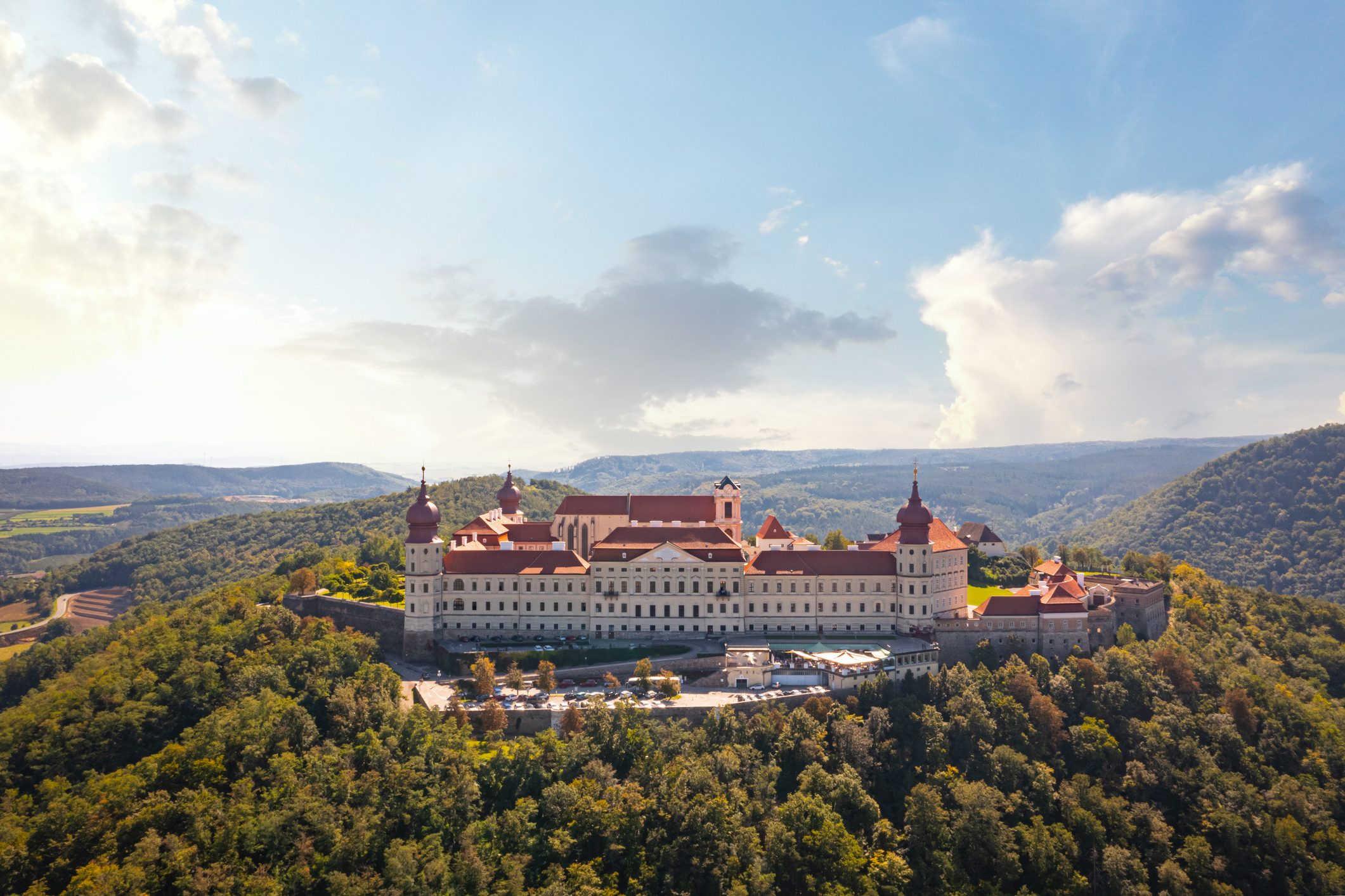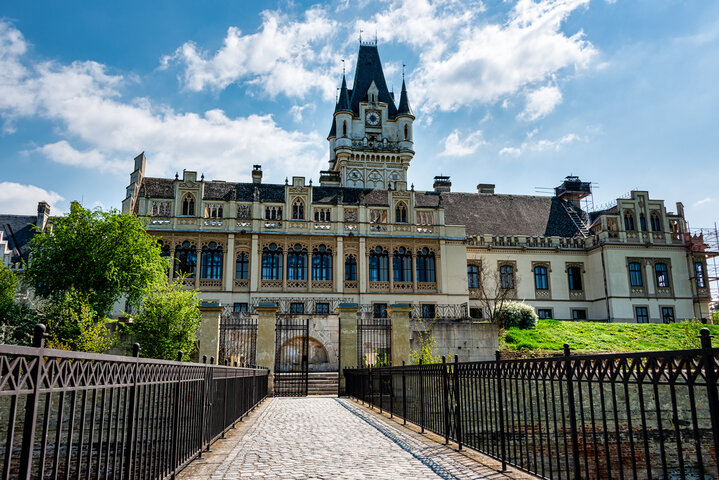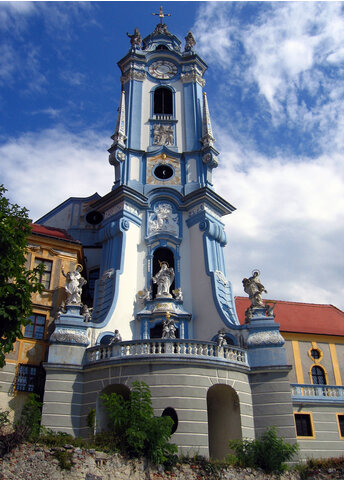Culture
Benedictine monastery Göttweig
The Benedictine Abbey of Göttweig, often referred to as the "Austrian Montecassino," is one of the most significant monasteries in Lower Austria. Perched on a hill at the eastern end of the UNESCO World Heritage Wachau Valley, the abbey offers breathtaking views of the surrounding landscape and the Danube River. Göttweig Abbey is not only a spiritual center but also an important cultural and tourist destination, attracting numerous visitors each year.
History of Göttweig Abbey
The Göttweig Abbey was founded in 1083 by Bishop Altmann of Passau as a monastery for Augustinian canons. A few years later, it was transformed into a Benedictine monastery. For over 900 years, Benedictine monks have lived and worked in Göttweig, making it a prominent religious and cultural center.
In the 18th century, under Abbot Gottfried Bessel, the abbey was rebuilt in the Baroque style. The architect Johann Lucas von Hildebrandt, one of the leading Baroque architects of the time, played a significant role in shaping the abbey’s current appearance. After a devastating fire in 1718, construction on the monumental Baroque complex began, although the abbey was never fully completed. Despite this, Göttweig Abbey remains one of Austria’s most impressive Baroque monasteries today.
Architecture and Key Highlights
The Baroque architecture of Göttweig Abbey is a masterpiece, majestically positioned on a hill and visible from miles away. The impressive buildings and vast monastery complex reflect the abbey's long-standing religious and cultural influence.
1. The Abbey Church
The Abbey Church of Göttweig is the spiritual heart of the monastery and a stunning example of Baroque ecclesiastical architecture. It was renovated in the 18th century and features a lavish interior with an ornate high altar and beautifully decorated side chapels. The ceiling frescoes, depicting the Assumption of Mary and other biblical scenes, are particularly notable.
Today, the church is a place of peace and reflection, as well as a popular venue for musical performances, including concerts and organ recitals.
2. The Imperial Staircase
One of the architectural highlights of Göttweig Abbey is the Imperial Staircase, one of the most magnificent Baroque staircases in Europe. Designed by Johann Lucas von Hildebrandt, this grand staircase leads to the upper parts of the abbey and is famous for its stunning ceiling fresco by Paul Troger, which depicts the Triumph of the Divine and the Apotheosis of Saint Benedict.
With its grand columns and artistic design, the Imperial Staircase is one of the most breathtaking features of the abbey and a must-see for any visitor.
3. The Imperial Room and the Museum
The Imperial Room, which can be visited on guided tours, is another highlight of Göttweig Abbey. This beautifully decorated room was originally designed to welcome the emperor, who frequently visited the abbey. The Imperial Room reflects the abbey’s close connection with the imperial family and its political significance in Austrian history.
The abbey museum provides further insight into the monastery’s history, showcasing religious artworks, historical documents, and objects that illustrate the long tradition of the Benedictine order at Göttweig.
4. The Abbey Park and Panoramic View
The Abbey Park is a peaceful place for relaxation and offers scenic walking paths. From the hilltop, visitors can enjoy panoramic views of the surrounding landscape, the Danube River, and the Wachau Valley. The view is especially stunning in the spring and autumn when the Wachau's natural beauty is at its peak.
5. The Abbey Library
The Abbey Library of Göttweig is another treasure of the monastery, housing a valuable collection of over 150,000 volumes, including numerous manuscripts, incunabula (early printed books), and rare works. The library represents the abbey’s role as a center of knowledge and education and is renowned for its impressive Baroque interior design.
Significance of Göttweig Abbey
The Benedictine Abbey of Göttweig is not only a remarkable architectural monument but also a living spiritual center. Around 40 Benedictine monks continue to live and work at the abbey today, following the Rule of Saint Benedict, “Ora et Labora” – “Pray and work.” The monks dedicate themselves to prayer, pastoral care, and preserving the cultural and religious heritage of the monastery.
Göttweig Abbey also plays an important role in the region, both as a tourist attraction and as a spiritual retreat. It is part of the UNESCO World Heritage Wachau Valley and hosts numerous events, including concerts, spiritual retreats, and guided tours, drawing visitors from all over the world.
Visiting and Events
Göttweig Abbey is a popular destination for visitors looking to discover the history and culture of the monastery. In addition to guided tours through the abbey’s magnificent spaces, there are regular concerts, exhibitions, and spiritual events. The Baroque concerts in the Abbey Church and the Imperial Staircase are especially popular with visitors.
The abbey also has a guesthouse where visitors can stay overnight and participate in spiritual retreats, offering an opportunity for peace and reflection.
Conclusion
The Benedictine Abbey of Göttweig is a stunning example of the grandeur and richness of Austrian Baroque architecture and remains an active center of Benedictine life. With its impressive architecture, magnificent Abbey Church, grand Imperial Staircase, and breathtaking location high above the Danube, Göttweig Abbey offers an unforgettable experience for every visitor. Whether you are interested in history, architecture, or spirituality, a visit to Göttweig Abbey is a journey into a world of beauty, culture, and inner peace.


